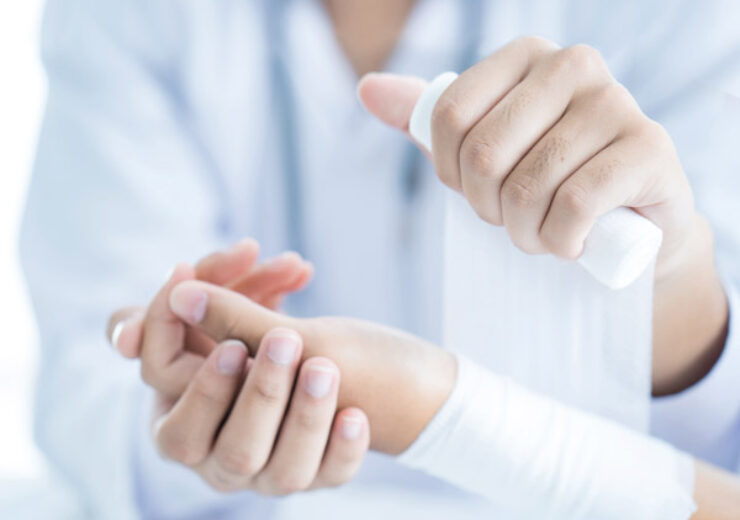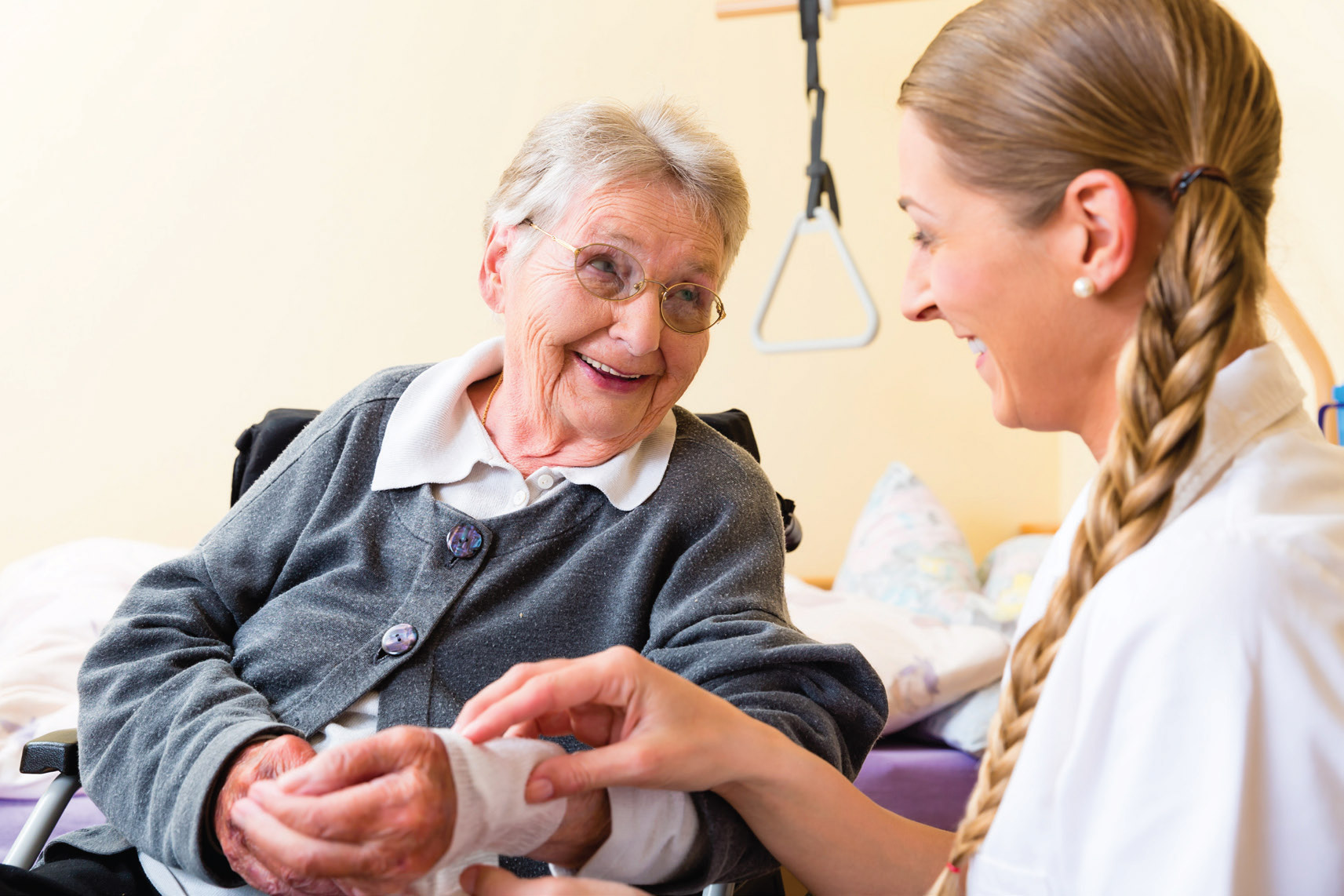The prevalence of chronic wounds is on the rise in the developed world. This is due to its population living longer and an increase in the rate of conditions like diabetes mellitus – one of the most common reasons the body might struggle to regenerate tissue after sustaining a wound. The European Wound Management Association has been at the forefront of defining good wound management practices since its inception in 1991, and ahead of its upcoming conference, the organisation’s president Sebastian Probst tells Peter Littlejohns why wound care is still in a transitional phase from an art to a science.

Image: Portrait Image Asia/Shutterstock.com
It’s fair to say that Sebastian Probst has dedicated his life to the field of wound care. The current president of the European Wound Management Association (EWMA) started out as a registered nurse in Switzerland in the early 2000s, before deciding to specialise in wounds. He hasn’t looked back since, gaining a master’s degree and a PhD in the field, and establishing himself as an academic as well as a practitioner. “From there, I became head of wound care for five hospitals in the southern part of Switzerland,” he says. “We’re talking 2005, so a nurse-led outpatient clinic was pretty innovative.” There’s no shortage of innovative thinking in wound care, a fact marked by the numerous products on the market, but like most areas of medicine, the management of wounds evolved from very primordial beginnings. It’s impossible to pin down the earliest use of a wound treatment, but it’s clear that our intellectual ancestors were onto something: Egyptians are thought to have conceived the first adhesive bandage using honey (among other things), which is still an ingredient in many of today’s advanced dressings. The Greeks emphasised the importance of hygiene, washing the wound with clean water and using vinegar to keep infection at bay much like acetic acid is used today.
“In order to move the discipline of wound care closer towards science, both in research and by standardising care in the clinic, there’s a need to cultivate interest in the topic among the medical profession.”
Probst explains that things didn’t move forward too significantly from there until Florence Nightingale took the role of hygiene a step further and worked with political incumbents during the Crimean war to introduce sanitation as a best practice. This was both in the care of wounds, which meant they were always to be washed and bound with clean bandages, and in the wider hospital system, where handwashing and disinfecting the surroundings became mandatory. “The mortality rate dropped drastically,” says Probst. The next big advancement came in 1962, when George D Winter demonstrated the benefits of a moist environment for healing wounds. “He showed on pigs that if you take a moist gauze and put it on the skin, the healing process is much faster, and there is less scarring,” adds Probst.

Spoilt for choice
An associate professor of tissue viability and wound care at the University of Applied Sciences and Arts Western Switzerland, Probst’s time is split between teaching and research, but also clinical practice, where he sees no shortage of products vying for pole position as the go-to option for practitioners.
This is especially true for advanced dressings and with bodies of scientific literature supporting them, as well as negative pressure wound therapy machines and some of the more recent innovations, like tools that measure the bacterial load of wounds, Probst describes the situation as “a jungle”. “If I have all of these different devices in the outpatient clinic, where shall I put the patient?” There’s a tone of levity to Probst’s question, but the challenge of selecting the right tools in a market brimming with options is quite serious.
One reason for the difficulty is that the endpoint, or primary outcome, that’s measured in wound care studies, tends to only be wound-size reduction. While Probst says wound-size reduction is “a very good outcome”, he argues that other endpoints should be added too, like prevention of infection, or reduction of bacterial load. “How many bacteria you have on a wound can cause, for instance, a local infection, which can lead to a systemic infection,” Probst adds.
When we consider another important endpoint raised by Probst, the “quality of life” of patients, it’s easy to see why wound-size reduction shouldn’t be the be-all and end-all in research. Many patients with chronic or non-healing wounds are elderly, with comorbidities that may prevent a wound from ever healing, and in this case, it’s worth exploring whether focusing on these other factors as endpoints on their own, or at least alongside the ultimate goal of wound closure, could lead to treatments that enhance quality of life for patients like these. Other aspects of wound care research that Probst is pushing to change are the number of participants, or the “N”, in studies, as well as the methodological bias and lack of standardisation he sees. “We really need rigorous studies that measure with the same instruments and a larger N, so that we can generalise the results to different settings,” he says.

Interest and knowledge
In order to move the discipline of wound care closer towards science, both in research and by standardising care in the clinic, there’s a need to cultivate interest in the topic among the medical profession. Although wound care has become more collaborative over the years, with teams made up of different specialities, “it’s still very nurse led,” says Probst. “Without a proper diagnosis, we cannot manage or treat these wounds and only a physician can make a diagnosis,” he adds.
The problem, according to Probst, is that wound care doesn’t tend to attract the same interest as other specialties. “There are not that many physicians that are into wound care,” he says. He adds that this is even true for the rural parts of Switzerland, the country in which Probst has worked alongside colleagues in the field to elevate the importance of wound care in the clinic. Before patients even reach the clinic, the first line of investigation is the general practitioner and Probst says here too there’s a lack of interest in wound care. “There’s a lot of tissue viability nurses, but we also need GPs that are interested in wound care,” he says. One way that Probst has addressed this issue during his presidency is by condensing the information in EWMA’s larger documents on diagnosing and managing different wound types, as well as antimicrobial stewardship, into “one pagers” that physicians across the spectrum can understand quickly and make decisions with the knowledge at hand. “For example, for the antimicrobial document we have some bullet points and then a flowchart,” adds Probst.

For those that undergo formal education in wound care, EWMA provides education on the topic so that medical staff are aware of what to look for when assessing patients, and Probst says this effort is as much about educating physicians as it is nurses. “We started with a curriculum for nurses,” he says. But in an effort to advance the standardisation of wound care among doctors too, EWMA designed a curriculum for the European Union of Medical Specialists (UEMS) in 2015. Now, courses accredited by EWMA and UEMS are the standard in wound care education in Europe. “That means accredited courses have to use the EWMA documents and an interprofessional team that’s teaching [at the institution],” says Probst. “We also developed e-learning modules that can be done for free and started to endorse wound centres.” All of this, Probst says, is done to establish “a certain level of knowledge” in wound care, so that practitioners in all areas are aware of the possibilities that arise from different wound types and they know how to treat each one. Although EWMA is mainly concerned with wound care in Europe, the materials it publishes are available in any country that wishes to use them, and Probst says several wound centres in China have been given EWMA accreditation. “We also work closely with Australia, America and Canada, so there’s a lot of international partner organisations,” he adds.
Improving wound care
Every year EWMA runs a conference aimed to cultivate interest in wound care and bring those who are active in the field together for sessions that address the challenges facing them as well the new innovations that could give clinicians another tool for treating different wound types. “We have 11 streams, so it’s huge,” he says. “The sessions deal with artificial intelligence, telemedicine, advancement of education and research in relation to epidemiology, pathology, diagnosis, prevention or management of wounds.” Probst is especially excited about the inclusion of AI, because “this will be the future,” he says, and he’s also part of a project being funded by the Swiss government to develop an AI-driven smartphone app that can bring more objectivity to the measurement of wounds in the clinic. “When you take a picture with your smartphone, it will measure the wound and the algorithm will offer different pathways to help with the decision making for treatments and diagnostics,” he explains. “It’s not only for specialists, but for nurses and physicians that do not have a wound care education it should help to guide them.”

What’s next for wound care?
Despite EWMA’s focus on the basics, technological advancement is important in wound care, with innovations like smart bandages and machinelearning powered diagnostic tools expected to revolutionise the field in the future. Here, too, EWMA hopes to play a role by bringing together engineers, clinicians and investors through its Innovation Forum. “It is difficult for start-ups to enter the market, so one of EWMA’s objectives is to enhance the development and availability of innovative wound care solutions for health care professionals, their patients and families,” says Probst. “We want to foster the development of innovative wound healing products from bench to bedside by enhancing contacts between innovative companies and established companies. Through [the Innovation Forum] we try to create and facilitate opportunities for strategic investment and partnerships, joint development, licensing, and mergers and acquisitions.” The forum will be the first iteration hosted by EWMA and will be part of the 2023 conference hosted by the organisation in Milan, Italy from 3–5 May this year.
